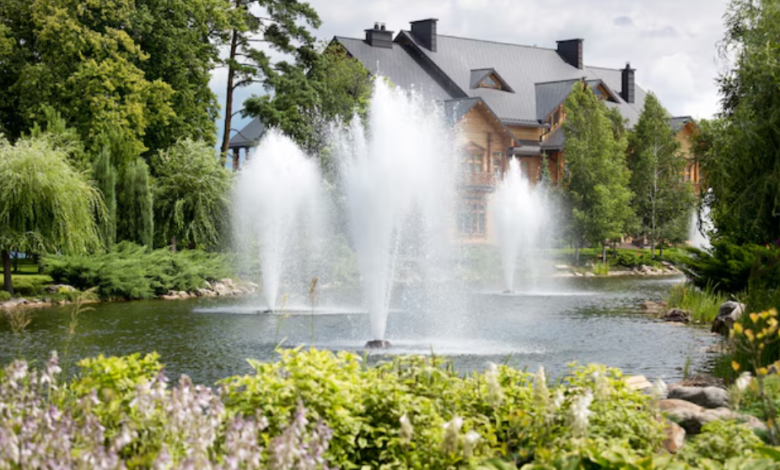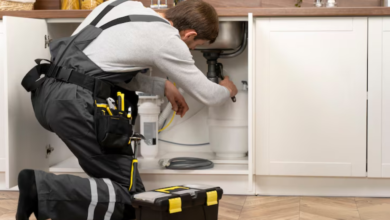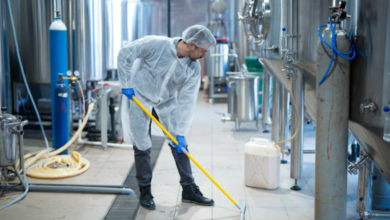Improving Aquatic Biodiversity with Aerating Systems Like Scott Pond Fountains

A pond can look perfectly fine and still be quietly falling apart.
From the surface, maybe there’s a bit of algae, perhaps a fountain gently bubbling near the middle. Seems peaceful enough. But that’s not the whole story. What’s going on underneath the water—most people never really think about it.
Still water isn’t harmless. It creates the kind of quiet that lets problems grow unnoticed. Oxygen levels drop. Algae starts taking over. Fish disappear, sometimes overnight. You might catch a strange smell coming off the water. That’s often the first real sign that something’s off.
Fountains, especially aerating systems like Scott pond fountains, aren’t just there to look nice. They move water. And that movement matters more than people think.
Why Oxygen Matters More Than Anything Else
All life in a pond depends on dissolved oxygen. It’s not just about fish, though they’re a big part of it. Everything—from tiny microbes to frogs and even birds that visit—needs the oxygen levels in the water to stay within a specific range.
Without circulation, oxygen gets trapped at the surface while the lower layers start to stagnate. That’s when the trouble really starts. Decomposition slows down. Nutrients pile up. And particular species—usually the ones you don’t want—start taking over.
Scott pond fountains pull water from the lower layers, bring it up, and expose it to the surface. That pulls oxygen down into the pond where it’s needed most. It’s a simple action, but it sets off a chain of improvements.
When a Pond Stagnates
No circulation? Then thermal stratification happens. It’s basically a split between the warm upper layer and the cold bottom layer. These two zones don’t mix on their own. The top stays full of oxygen. The bottom slowly turns into a dead zone.
Fish that swim too deep can suffocate. Muck builds up faster. And without mixing, gases like methane and hydrogen sulfide start rising to the surface. That’s when ponds begin to smell like rotten eggs.
Aerating fountains break that up. They mix the water vertically, a process known as destratification, which helps keep oxygen levels more consistent from top to bottom. It’s not complicated, but it’s essential.
The Small Wins Add Up
You won’t notice a dramatic shift overnight. But over time, the changes start stacking up. Most people who install aerators notice small things first. The water smells better. Fish seem more active. There’s less of that green film sitting on the surface.
Here’s what usually improves:
- Algae growth slows down
- Water becomes clearer
- Bugs like mosquitoes stop breeding so aggressively
- Muck and sludge start breaking down
- Native species stick around longer
These aren’t flashy changes, but they’re the kind that matter over the long term.
See also: Why Every Homeowner Should Work with a Fencing Contractor
Where Aeration Makes the Most Sense
Not every pond is the same. But some benefit more than others:
- Ponds with little or no natural inflow or outflow
- Shallow ponds that warm up quickly
- Decorative or stocked ponds with fish that need stable conditions
- Ponds near farms or residential areas that collect nutrient-rich runoff
In these spots, Scott pond fountains can do a lot. They’re not complicated to install. And they help restore enough movement and oxygen to improve overall conditions without needing heavy intervention.
About Placement and Flow
Where the fountain sits makes a difference. Most round ponds do fine with one unit in the middle. But ponds with weird shapes or long, narrow arms might need more than one to reach every corner.
And not all aerators are the same. Some push water outward more aggressively. Others focus on lifting deeper water. What matters most is matching the system to the depth and volume of the pond.
There’s also the question of oxygen transfer rate—how quickly the system mixes air into the water. A higher rate usually helps ponds that are already in bad shape. But even a modest system can make a big difference if it runs consistently.
It’s Not Just About Fish
Sure, fish need oxygen. But so do a lot of the smaller players in a pond.
- Insects like dragonflies use clean water to breed
- Amphibians rely on stable environments to survive predators and disease
- Microbes break down organic matter when oxygen is present
- Birds show up when the pond supports enough life to feed on
Aeration improves these invisible relationships. You’re not adding new species, but you’re giving the current ones a better shot at surviving.
A Few Things to Keep in Mind
There’s no perfect system. Aeration comes with a few trade-offs.
If a pond’s been stagnant for years, suddenly mixing the layers might cause short-term oxygen dips. That can shock fish. It’s rare, but it happens.
Fountains need basic maintenance too. Debris can clog intakes. Power supplies have to be checked once in a while. And while many people like the sound of moving water, others might find it distracting, depending on the setting.
Still, for most users, those are minor issues compared to the long-term benefits.
Final Thoughts
Ponds aren’t self-correcting. Without movement, things fall apart. Slowly at first. Then all at once.
Systems like Scott pond fountains offer a reliable way to bring balance back. They keep oxygen flowing, discourage problem algae, and create a healthier space for all forms of life.
You don’t need a perfect pond. But a well-aerated one gets closer, without chemicals, without constant fixing. Just quiet, ongoing support from something that does one job well: keeping the water moving.




